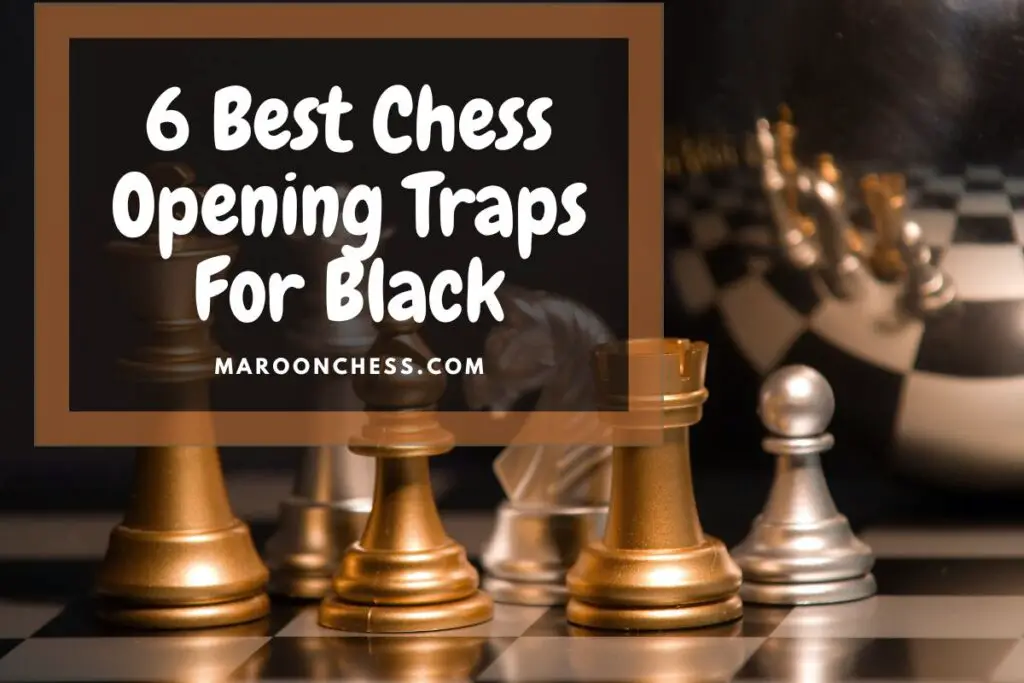Learning how to play the different openings is important for your overall chess development. When learning chess openings, you should study the main strategic ideas and also the different traps that may arise.
Knowledge of these traps can allow you to gain a winning advantage as early as in the opening. Conversely, you won’t fall for them if your opponent tries them against you.
In this article, we will look at the 6 best opening traps for black. Use these traps in your games to blow your opponent off the board in just a few moves.
Here are the 6 best chess opening traps for black:
- Busch-Gass Gambit Chess OpeningTrap
- Old Benoni Chess Opening Trap
- Modern Benoni Chess Opening Trap
- Queen’s Gambit Declined Chess Opening Trap
- Queen’s Indian Defense Chess OpeningTrap
- Englund Gambit Chess Opening Trap
1. Busch-Gass Gambit Opening Trap
The Busch-Gass Gambit is an aggressive opening choice for black against white’s first move pawn to e4. It is an unusual variation that begins with the moves: 1.e4 e5 2.Nf3 Bc5
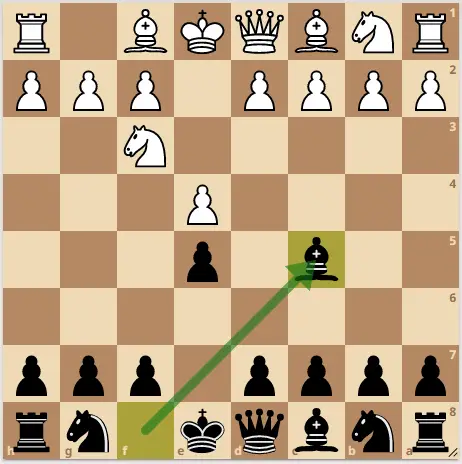
Black ignores the attack on the e5-pawn and immediately goes on the offensive with the move Bc5. It is considered an unsound opening, but there are many traps in the position if white doesn’t play correctly. Your opponent is usually unprepared for this opening because it is rarely played. Therefore, you can catch them off guard.
The best response for white is to take the pawn on e5 because it is a free pawn of course. After 2.Nxe5 Nc6 3.Nxc6 dxc6, we reach a position that resembles the stafford gambit.
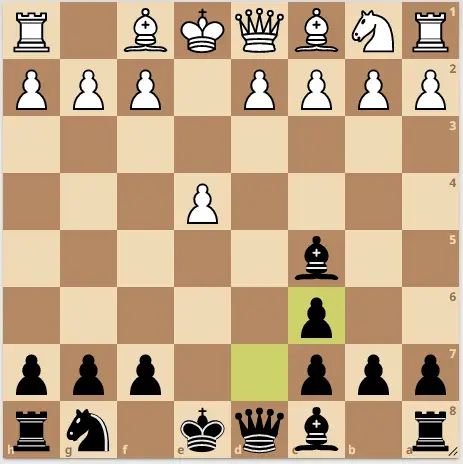
In fact, the majority of players in this position make the wrong move by playing Bc4. This seemingly innocent developing move gives away whatever advantage white had due to the tactical blow Bxf2 check.
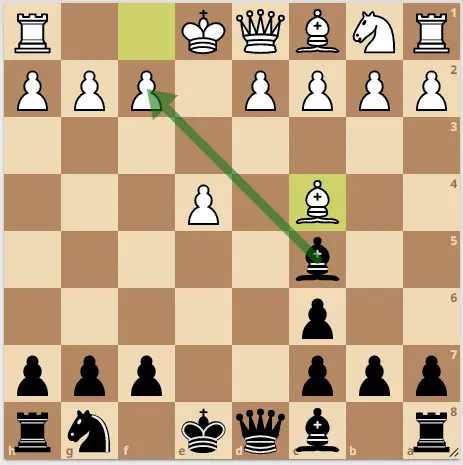
After Kxf2, white will play Qd4 forking the king and the bishop on c4.

Nevertheless, black doesn’t even have to opt for this tactical blow. We are not going to let white get away that easily. Black can go for the better alternative 5…Nf6
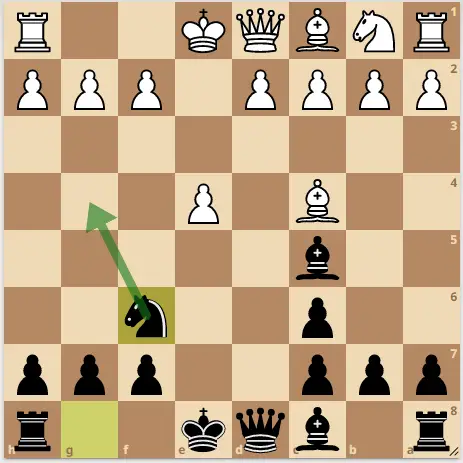
Knight to f6 starts the forcing variation for black as white usually responds wtih pawn to d3 to protect the e4-pawn. The idea here is that black wants to play the attacking move knight to g4. The knight on g4 and the bishop on c5 will work together to carry out an attack against the f2 square. Therefore, white usually castles at this point to add more protection over the f2 square.
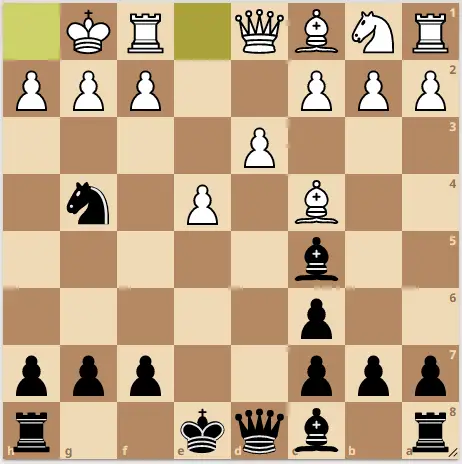
Nevertheless, black will continue to add pressure on the f2 square with the move Qh4. In fact, black is already winning here.
The pawn on f2 is overloaded with attackers, meanwhile black is threatening checkmate on h2.

It’s only the 7th move and white is defenseless. For example, after 8.a3 (stopping checkmate) then, 8…Nxf2 and the white’s position is destroyed. White can try 9.Qf3 but 9…Nxh3+ is a discovered double check against the white king. After 10.Kh1 Ng5+ wins at least the queen. But why not go for checkmate? Even better is 10…Nf2+ 11.Kg1 Qh1# checkmate
Busch-Gass Gambit checkmate
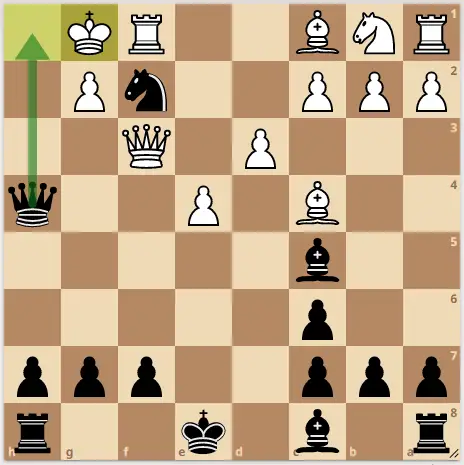
2. Old Benoni Chess Trap
The old benoni opening is not played by many grandmasters nowadays, but can lead to sharp and tactical positions. The opening trap for black in the old benoni begins with the moves 1.d4 c5
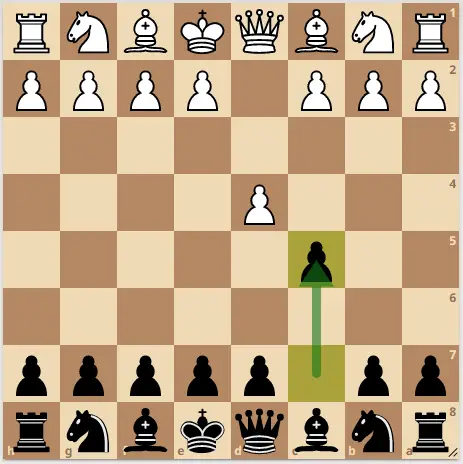
Black offers a gambit right from the start. After white takes the pawn, you then play the move pawn to e6 attempting to recapture the pawn on c5. Your opponent may think that you messed up something as they can play the move pawn to b4 to protect the pawn on c5.
2.dxc5 e6 3.b4
White holds onto the pawn
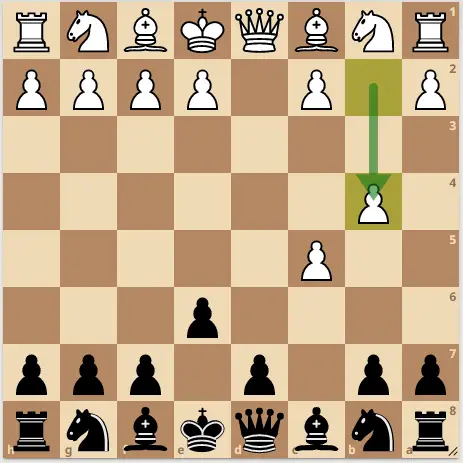
It looks like black position is cramped as the bishop on c8 cannot develop onto the most active squares. However, black is doing just fine here. The next move for black is to undermine white’s pawn chain with the move pawn to a5.
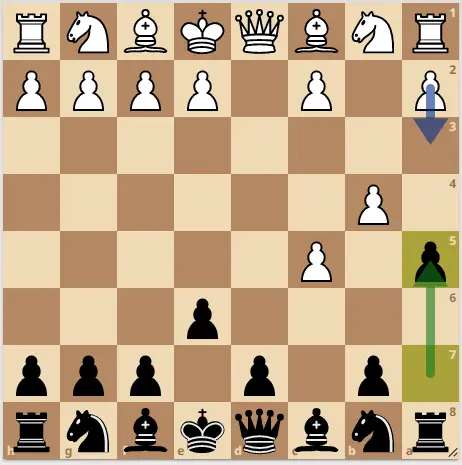
Already, white can run into black’s trap and lose the game immediately if he doesn’t respond correctly. If white tries to protect the pawn symmetrically with the move pawn to a3, black can exchange on b4 exploiting the fact that the rook on a1 is hanging. Therefore, white cannot recapture on b4. Black will win back the c5 pawn on the next move.
Black wins a whole rook if white recaptures on b4

Another option white can play is pawn to c3 trying to protect the pawn on b4, but this runs into another one of black’s trap.
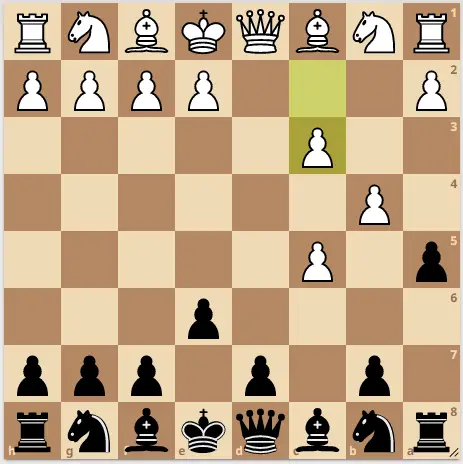
After 4…axb4 5. cxb4 Qf6, all of a sudden, black’s queen is attacking the white rook on a1 and there is nothing white can do to prevent it from being captured on the next move unless white sacrifices a bunch of material.

3. Modern Benoni Chess Trap
The modern benoni is an improved version of the old benoni as the black’s knight is developed on f6. It is reached after the moves 1.d4 Nf6 2.c4 c5.
Modern Benoni
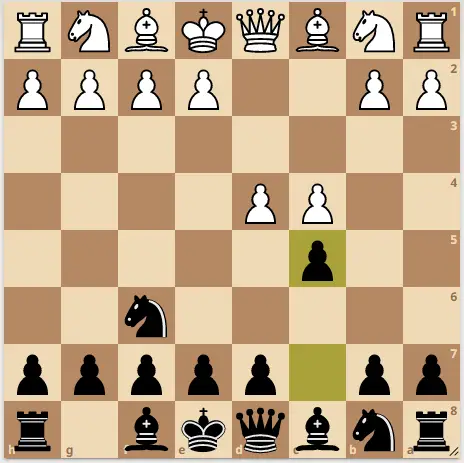
After pawn to c5, white can play knight to f3 trying to support the d4 pawn. Black replies here with 3…cxd4 4.Nxd4 e5

It is tempting for white to play 5.Nb5, with the idea of Nd6 check. If white plays 5.Nb5, push your pawn to d5 to start setting the trap.
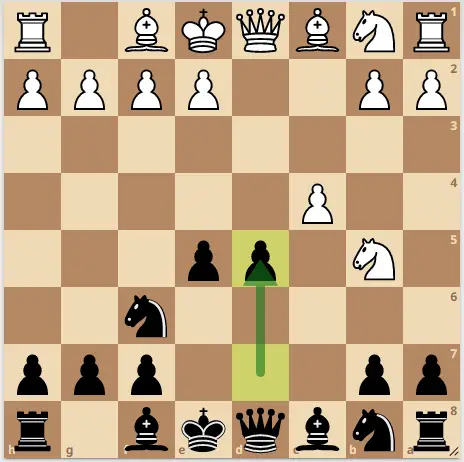
After white captures the pawn via 6.cxd5 it’s important for you NOT to recapture the pawn because after 6…Nxd5? 7.Qxd5! Qxd5 8.Nc7+ white recaptures on d5 and is up a piece.
Tactical blow!

Instead you should calmly develop your bishop on the c5 square which sets a trap in the position.
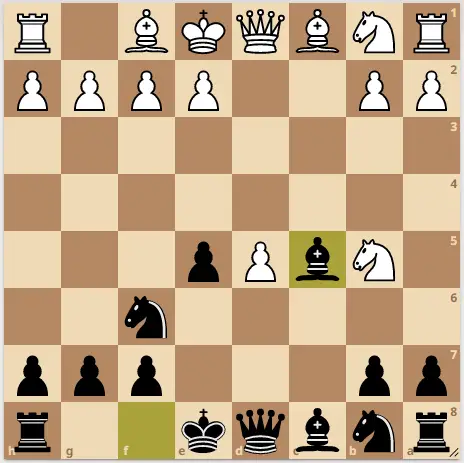
If white goes ahead and play the move pawn to d6, trying to prepare Nc7 + to fork the king and the rook, black will ignore this and play Ne4 which sets a mating trap in the position.
Black sets a mating trap in the position

As you can see, if white goes ahead and play Nc7 + thinking he forks the king and rook, black can sacrifice his queen on c7. After dxc7, black delivers checkmate with the move Bxf2#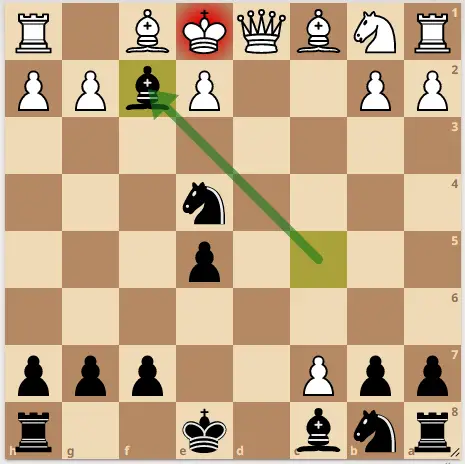
4. Queen’s Gambit Declined Chess Trap
This next opening trap for black is the most popular trap in the Queen’s gambit declined. It begins with the moves: 1. d4 d5 2. c4 e6 3. Nc3 Nf6 4. Bg5 Nbd7

4…Nbd7 sets a trap that has ensnared quite a few players. Play continues 5. cxd5 exd5, resulting in a position that resembles the QGD Exchange variation, which is okay for both sides. However, if black gets greedy and capture the pawn on d5 thinking the knight on f6 is pinned, black can go ahead and capture the knight on d5 anyway.
While superficially appears to win a pawn

What is this? Black knight breaks the pin and recaptures on d5.
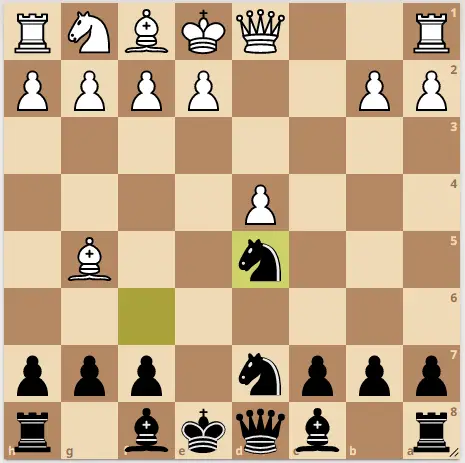
This seems like suicide. Are we just giving up a whole queen here?
No, with closer inspection, after 7. Bxd8, white has not won black’s queen because of 7… Bb4+!, where the only legal move is 8. Qd2, and black gets his queen back and emerges a minor piece ahead.
Qd2 is forced. After 8…Qxd2+ 9.Kxd2 Kxd8 the smokes have cleared and black is up a piece.
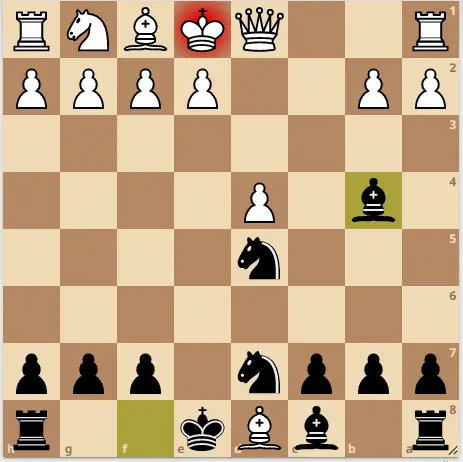
A lot of players fall for this trap even masters rated over 2300. This trap is tempting because it appears white can grab a pawn using the pin.
5. Queen’s Indian Defense Chess Trap
The Queen’s Indian Defense is one of the most classical openings in chess employed by World Champions like Anatoly Karpov and Vishwanathan Anand. It begins with the moves: 1.d4 Nf6 2.c4 e6 3.Nf3 b6

We will look at the most popular trap in this opening which arises after the moves 4.g3 Ba6 5.b3 c5 6.d5

After pawn to d5, white argues that he gains space in the center, but black can simply capture this pawn with his knight via 6…Nxd5. It appears that black is giving up a whole knight after 6…Nxd5 7.cxd5. However, black can play Qf6 winning a rook and the exchange.

Nevertheless, black is not actually winning here, though he’s up the exchange. The computer gives this evaluation a slight edge for white. However, if white tries to trap the white queen on a1, it can backfire on him.
For example, after 7…Qf6 8.Qc2 Qxa1 9.Nc3 white is attempting to trap white’s queen with the move Bb2. The black queen is locked on a1. If white can finalize his development and play Bb2, he will trap the queen.

However, this is too slow because the bishop on c1 is pinned to the white king. White would need to develep his f1 bishop and castle kingside in time. Black can stop this with the move pawn 9…c4 (opening up the bishop).

If white continues with his plan 10.Bg2 then black plays 10…Bg4.

All of a sudden, the knight on c3 is attacked by 2 pieces and white will have a hard time defending the knight. He cannot defend it with the bishop because it is still pinned. This is completely winning for black.
6. Englund Gambit Chess Opening Trap
The englund opening is still a popular opening choice nowadays for players looking for an early attack. Black sacrifices his e pawn on move one with the hopes of quick development and activity for his pieces. It begins with the moves 1.d4 e5
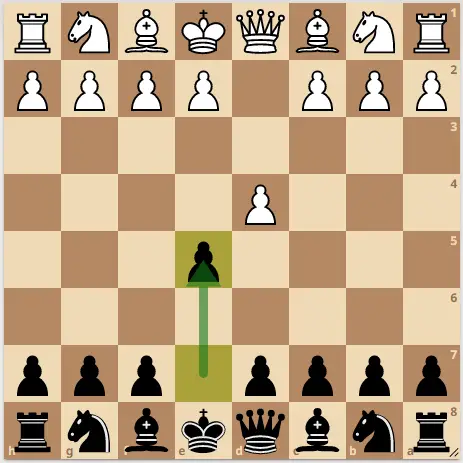
After 2.dxe5 black usually responds with 2…Bc5. Play continues 3.Nf3 d6 and after white takes the pawn on d6, it’s important that you immediately play the move Knight to e7. Your opponent will think that you premoved this move by mistake.
Taking the knight on e7 walks into a trap
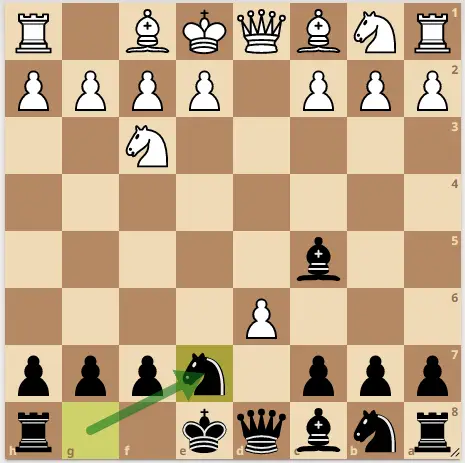
If white grabs the knight on e7, black has the move Bxf2 check, deflecting the king away from the white queen. Black will capture the white queen on d1 on the next move.

Final Thoughts
Some of these chess opening traps can be dubious, but most of the times your opponent does not play the right moves and eventually fall for them anyway. There seems to be a misunderstanding that these traps only work on weaker players. In fact, there a lot of strong players rated over 2400 that also fall for these traps according to chessbase database. By learning these traps, you can win the chess game or even checkmate your opponent in less than 15 moves.

